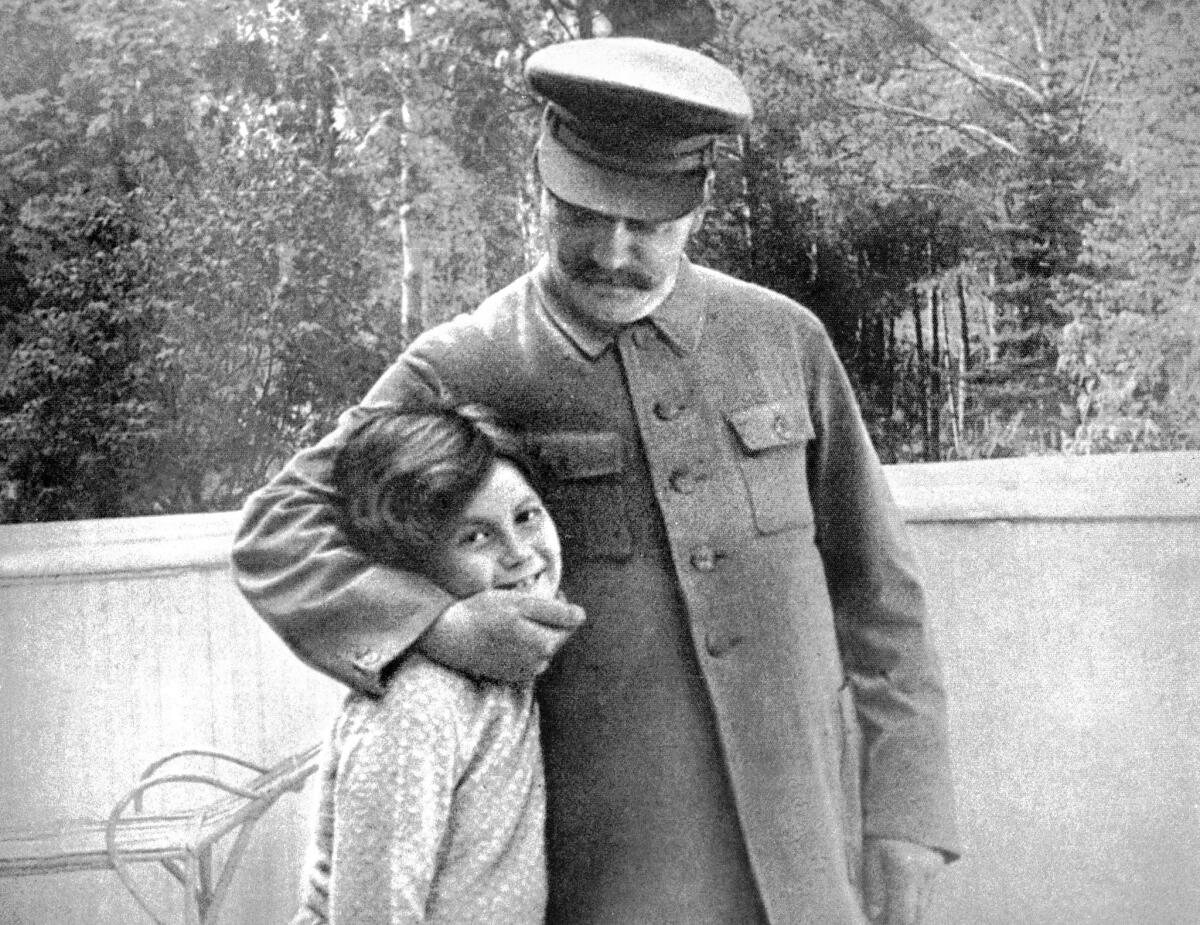Review: What was it like to be ‘Stalin’s Daughter’?

- Share via
“Why is it that I cannot find my own right way?” Svetlana Alliluyeva asked herself in 1986. She had rejected the confining privileges of being Joseph Stalin’s daughter when she defected from the Soviet Union in 1967, writing to the son and daughter she left behind that “[i]t is impossible to be always a slave.” But she also proved ill-equipped for dealing with “this modern jungle of freedom” in the West.
It took fewer than two decades for Alliluyeva to run through the $1.5 million garnered by her memoir, “Twenty Letters to a Friend,” most of it absorbed by the debts of the man she impulsively wed only three weeks after they met in 1970. The marriage didn’t last even two years; she spent the next decade moving back and forth across the U.S. and to England with their daughter Olga in tow. When she decided, again on the spur of the moment, to return to Russia in 1984, she cemented many people’s impression of her as an unstable loose cannon.
A principal virtue of Canadian critic and biographer Rosemary Sullivan’s empathetic “Stalin’s Daughter: The Extraordinary and Tumultuous Life of Svetlana Alliluyeva” is the vivid sense it offers of Alliluyeva as a woman buffeted by forces beyond her control, including her unruly emotions, in a world where her symbolic significance overshadowed her individual qualities.
MORE: 27 nonfiction books you’ll want to read -- and share -- this summer
Yes, Svetlana Stalina was a Soviet “princess” (a word seriously overused here as it is in everything written about her), favorite child of the U.S.S.R.’s most powerful man. She was also the shellshocked survivor of her mother’s suicide in 1932, when she was only 6, and the disappearance of several close relatives during the purges orchestrated later in that decade by her father.
Sullivan’s account of Svetlana’s youth depicts her oscillating between compliance and rebellion. She wed once in defiance of her father’s wishes, once to please him; both marriages failed. After Stalin died in 1953, she hoped “to be treated as ordinary” and live quietly with her two children. She took her mother’s maiden name, Alliluyeva; she got a master’s degree in Russian literature and went to work at the Gorky Institute of World Literature, quietly defending the dissident writers who emerged during the tentative thaw that followed Nikita Khrushchev’s 1956 speech acknowledging her father’s crimes.
Yet Alliluyeva still felt no one truly saw her. “She simply couldn’t trust people,” said one of her few close friends. At the suggestion of another, she began writing a memoir chronicling a life filled with “cruel bereavements …disappointments and losses.” After she fell in love with Brajesh Singh, a foreigner undergoing treatment in a Moscow hospital, he arranged to have the manuscript of “Twenty Letters to a Friend” smuggled into his native India. The thaw was over by 1965; it wasn’t safe even for his daughter to write candidly about the Stalin years.
The Leonid Brezhnev regime refused to register Alliluyeva’s marriage to the terminally ill Singh, although it inexplicably permitted her to take his ashes to India. Sullivan suggests that her appearance at the American Embassy in New Delhi on March 6, 1967, was a characteristically hasty decision; Alliluyeva wanted to stay in India, but the government feared offending the U.S.S.R. The Lyndon B. Johnson administration, though pursuing improved Soviet relations, couldn’t resist the publicity coup of giving asylum to Stalin’s daughter; it helped arrange a lucrative book deal so she could be admitted as a private citizen visiting her publisher.
It’s not easy to do justice to Alliluyeva’s turbulent years in the U.S. As intelligent as she was volatile, she yearned to lead a normal “American” life yet remained Russian to the core, a warm and loyal friend who held implacable grudges and was capable of bitterly breaking with anyone she felt had betrayed her.
Sullivan does a nice job of conveying her subject’s point of view without accepting it as the last word. She recognizes the neediness that fueled Alliluyeva’s love affairs and ill-judged final marriage as well as the lingering guilt that enabled the Soviets to manipulate her one more time when they allowed her son to make contact in 1982. His claim that he was seriously ill provoked her abortive return to the motherland; that too lasted less than two years.
Ironically, Alliluyeva seems to have found peace in her final two decades, when she was reduced to living in charitable housing in the U.K. and then in senior residences in the United States. Perhaps the struggle to control her life had been too much for her and she was relieved simply to let it go. Sullivan paints a moving picture of her warm relationship with Olga, who apparently never resented her rootless, restless childhood, and quotes in closing from a tender letter Alliluyeva left her daughter upon her death. “I am always with you,” she wrote, “in loving ways.” At last, Stalin’s daughter could write entirely as a private person.
Smith is a contributing editor of the American Scholar and the author of “Real Life Drama: The Group Theatre and America, 1931-1940.”
Stalin’s Daughter: The Extraordinary and Tumultuous Life of Svetlana Alliluyeva
Rosemary Sullivan
Harper: 752 pp., $35
More to Read
Sign up for our Book Club newsletter
Get the latest news, events and more from the Los Angeles Times Book Club, and help us get L.A. reading and talking.
You may occasionally receive promotional content from the Los Angeles Times.










